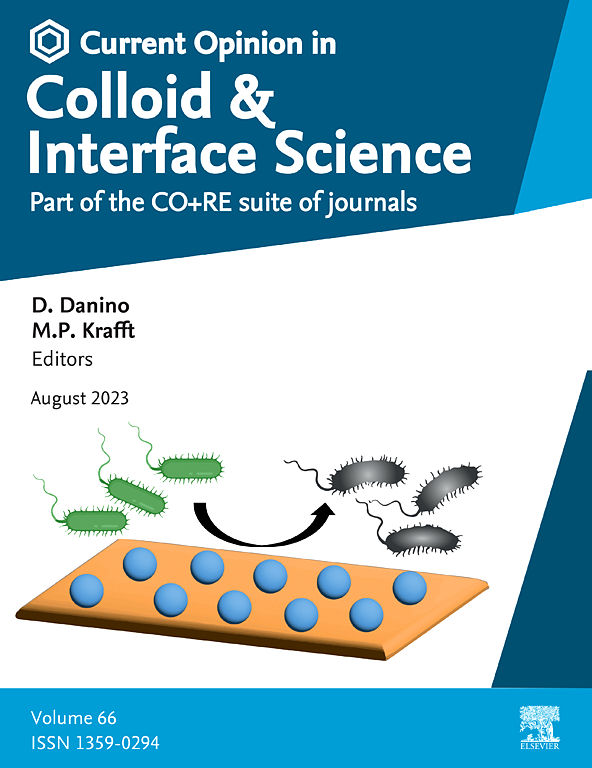Direct ink writing of particle-based multiphase materials: From rheology to functionality
IF 7
2区 化学
Q1 CHEMISTRY, PHYSICAL
Current Opinion in Colloid & Interface Science
Pub Date : 2025-02-01
DOI:10.1016/j.cocis.2024.101889
引用次数: 0
Abstract
Direct ink writing (DIW) allows producing complicated geometries by extruding material from a nozzle. The ink has to meet certain material requirements during and after printing for the object to be successfully produced. Meanwhile, the functionality requirements of the end-use application should be met. This paper attempts to provide the rheological basis and critical view to understand the material requirements for DIW inks and to help in making the bridge between the rheology and printability of particle-based multiphase DIW inks while meeting the functional demands of the end product. Colloidal suspensions and Pickering emulsions are often used as material classes for DIW. Some of the most important and noteworthy applications are described for both material classes. Thereafter, a more novel, particle-based multiphase system for DIW, namely capillary suspensions, is briefly discussed.

颗粒基多相材料的直墨书写:从流变性到功能性
直接墨水书写(DIW)允许通过从喷嘴挤出材料来生产复杂的几何形状。油墨必须在印刷过程中和印刷后满足一定的材料要求,才能成功地生产出来。同时,应满足最终用途应用程序的功能需求。本文试图为了解DIW油墨的材料要求提供流变学基础和批判性观点,并有助于在满足最终产品功能需求的同时,在颗粒基多相DIW油墨的流变学和印刷性之间搭建桥梁。胶体悬浮液和皮克林乳剂通常用作DIW的材料类别。介绍了这两种材料的一些最重要和最值得注意的应用。然后,简要讨论了一种更新颖的基于颗粒的DIW多相系统,即毛细管悬浮液。
本文章由计算机程序翻译,如有差异,请以英文原文为准。
求助全文
约1分钟内获得全文
求助全文
来源期刊
CiteScore
16.50
自引率
1.10%
发文量
74
审稿时长
11.3 weeks
期刊介绍:
Current Opinion in Colloid and Interface Science (COCIS) is an international journal that focuses on the molecular and nanoscopic aspects of colloidal systems and interfaces in various scientific and technological fields. These include materials science, biologically-relevant systems, energy and environmental technologies, and industrial applications.
Unlike primary journals, COCIS primarily serves as a guide for researchers, helping them navigate through the vast landscape of recently published literature. It critically analyzes the state of the art, identifies bottlenecks and unsolved issues, and proposes future developments.
Moreover, COCIS emphasizes certain areas and papers that are considered particularly interesting and significant by the Editors and Section Editors. Its goal is to provide valuable insights and updates to the research community in these specialized areas.

 求助内容:
求助内容: 应助结果提醒方式:
应助结果提醒方式:


